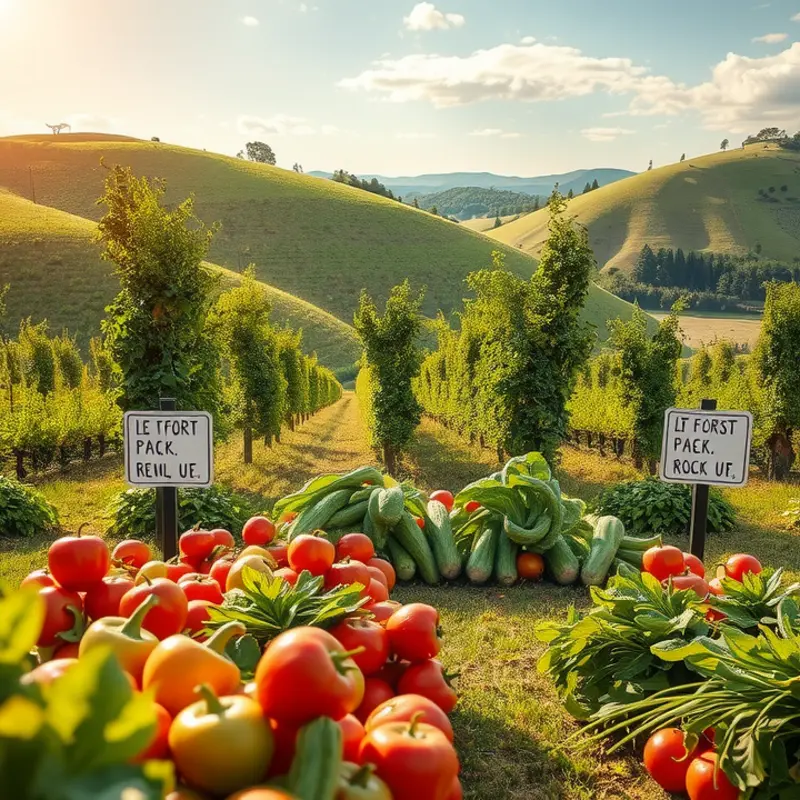For busy individuals and families, meal planning can often feel overwhelming. The good news is that with a focus on creating versatile ingredients, you can simplify your meal routines while maximizing nutrition. This guide will walk you through practical strategies and ideas to not only save time in the kitchen but also boost creativity in your meals.
Building Your Versatile Pantry

A versatile pantry is the cornerstone of efficient meal prep. By choosing ingredients that serve multiple purposes, you can reduce prep time and minimize food waste. This chapter will guide you through essential pantry staples, focusing on grains, proteins, and vegetables that can be effortlessly combined into a variety of dishes.
Grains
Grains are a fundamental component of many meals and can seamlessly transition between different cuisines. Consider stocking your pantry with versatile options like rice, quinoa, and pasta. Rice can serve as the base for stir-fries, burrito bowls, or as a simple side dish. Quinoa is a protein-packed grain that adapts well to salads or as a substitute for rice. Pasta offers endless possibilities; pair it with varied sauces or toss it with vegetables for a quick meal. Buying these grains in bulk can also be cost-effective and reduce packaging waste, aligning with eco-friendly kitchen storage strategies.
Proteins
Proteins are another crucial staple that can elevate any dish. Consider keeping a mix of canned beans, lentils, and frozen meat or seafood. Canned beans such as chickpeas or black beans can be quickly turned into salads, stews, or even blended into spreads. Lentils cook quickly and are perfect for soups or as a hearty filler in wraps. For seafood lovers, frozen shrimp or fish fillets can make for speedy meals when paired with a variety of spices or sauces. Utilize techniques from the speedy seafood prep guide to make the most of your frozen protein options.
Vegetables
Vegetables are versatile and can be used in almost every dish, making them indispensable in your pantry. Fresh root vegetables such as carrots and sweet potatoes have a long shelf life and can be roasted, boiled, or added to soups. Leafy greens like kale or spinach can be incorporated into salads, smoothies, or lightly sautéed as a side. Consider frozen vegetables like peas or mixed stir-fry blends; they require no prep and maintain their nutritional value over time.
By selecting multi-functional staples, meal planning becomes less daunting and more efficient. Tailor your pantry to include these adaptable ingredients, and you’ll find yourself able to create a spectrum of dishes with ease. Remember, the key to success in meal prepping is not just about having a well-stocked pantry, but also about knowing how to incorporate each ingredient into diverse culinary contexts.
Quick Meal Preparation Techniques

Achieving efficiency in meal preparation demands mastering a few key techniques. One of the most effective methods is batch cooking. This approach involves preparing large quantities of food at once, allowing for meals to be quickly assembled later. For instance, cooking a big pot of grains or legumes can serve as the base for multiple meals throughout the week. You might rotate these ingredients through different cuisines by simply changing up the spices or sauces. For easy sauce preparation ideas, consider exploring easy sauce simmering.
Freezing is another valuable strategy to maximize meal prep efforts. Invest time in preparing and portioning meals or components in one session, then store them in the freezer. Freezing not only preserves the nutritional quality of meals but also offers the convenience of having a backup plan on busy days. To ensure optimal flavor and texture, try freezing sauces separately from their starch or protein components.
Embrace the art of leftovers to minimize waste and invigorate your menu. Leftover cooked vegetables can be turned into hearty soups or blended into sauces. A roasted chicken could become the star of a chicken salad, sandwich, or wrap. Alternatively, repurposing leftover grains by stir-frying them with fresh vegetables and proteins creates an entirely new dish.
Easy preparation methods like one-pan meals or sheet-pan dinners also save both time and effort. These methods require minimal cleanup and allow you to roast vegetables, proteins, and starches together, often in under an hour. Consider combining seasonal vegetable medleys with lean proteins and a drizzle of olive oil for balanced, pleasing dishes.
By adopting these techniques, planning ahead becomes less of a chore, and the dread associated with daily cooking disappears. These strategies not only create delicious meals efficiently but also empower you to enjoy more variety without the stress of daily meal planning.
Final words
Embracing versatile ingredients can significantly enhance your meal planning and prep, especially for busy individuals and families. By focusing on a well-stocked pantry and utilizing efficient cooking techniques, you can create a variety of healthy dishes without spending countless hours in the kitchen. Take small steps towards meal planning by experimenting with new combinations and making the most of leftovers. With a little creativity and organization, mealtime can become an enjoyable experience rather than a last-minute scramble.







